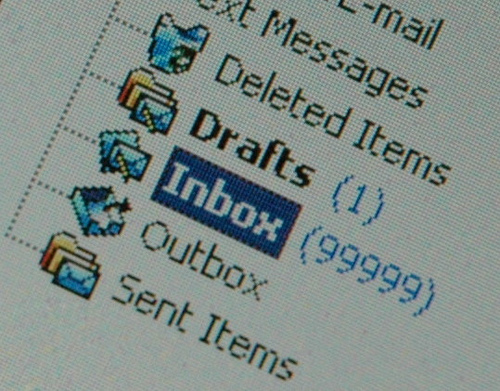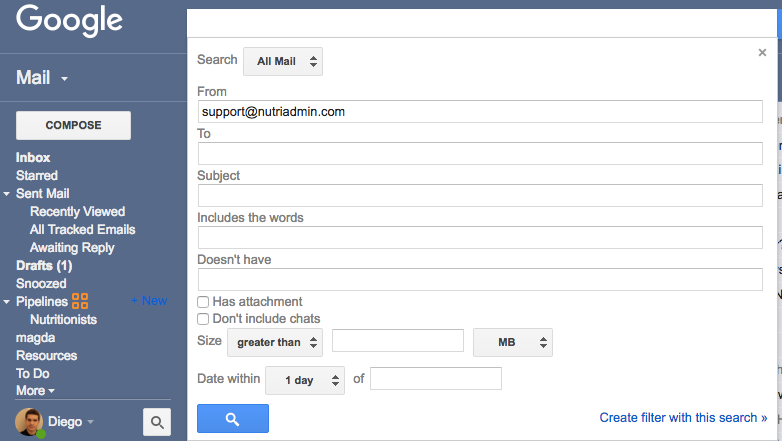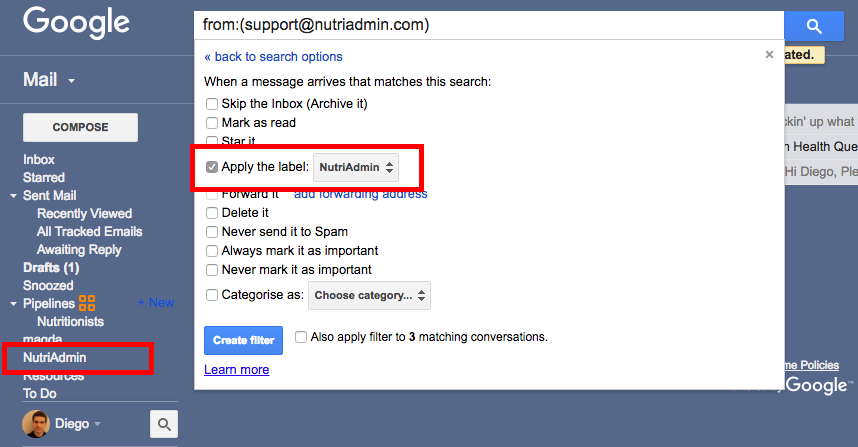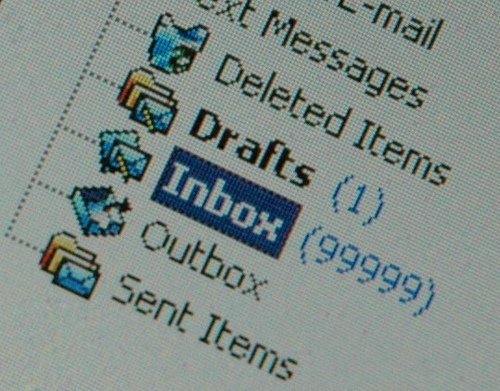
Ready to learn how to tame that wild inbox? If you are a nutritionional therapist, you would probably love it if 99% of emails in your inbox were a combination of:
- Emails from new clients requesting a consultation
- Important emails that require action (from clients, suppliers, conferences, etc)
- Current patients reporting dramatic progress thanks to your advice (with tears of happiness in their eyes)
However, what tends to happen is that you will receive all of those important emails, PLUS hundreds (if not thousands) of much less important (or even useless) communications:
- SPAM, i.e. “Get rich by betting in our casino”, “Buy this magic pill to lose weight”, etc
- Marketing emails (online stores, online services, shopping, etc)
- Auto-generated emails coming from services you use in the web (i.e. Facebook or Twitter)
The end result: a messy inbox, where the important emails are mixed with irrelevant content. This is a bad situation mainly because: a) It’s annoying and time consuming and b) you can miss on important emails from clients, or reply late to them.
This article provides practical tips for your inbox, but this is just the start! If you want to be truly productive, you need the right tools and also the right mindset and habits. Check out the productivity machine guide to learn how to develop better habits in your work/life.
The solution
I worked optimising systems and processes for a large financial corporation in London. One of my tasks was to Tame a Wild Inbox. Indeed this was a fierce opponent: 10,000 emails per week on average. Basically, one of the technology teams that responsible for solving urgent software problems, was being bombarded with thousands of emails every day – something completely unmanageable.
To put things in perspective, this inbox could contain a crucial email saying “HELP! We are losing millions of dollars in trading due to an error in the software” buried under 200 auto-generated emails with irrelevant information. Due to the large volume of emails, important actions would be often delayed – resulting in loses or problems. As you can see, having an untidy mailbox can lead to undesirable situations. You probably don’t want this happening to you.
But there is a happy end to this little story. At the bank, continued efforts in optimisation were applied, resulting in a reduction of emails by 95% – without sacrificing any of the important communications. The process we followed is simple and based on many small practical actions. I’m confident you can improve the health of your mailbox dramatically by following the steps detailed below.
The Method
This process for taming an inbox is very simple and anyone can benefit from it. It just can take some hours depending on the size of your inbox. That said, if you are overwhelmed by emails, I suggest you set some time aside to go through these practical steps as soon as you can. The investment will pay off almost immediately – as you will save much more time long-term than you dedicated.
I will list the easiest techniques to get started here, and describe more in-depth data analysis in a future post.
Step 1: Unsubscribe from all unwanted newsletters, marketing emails, spam, and the like
This is an easy step that will bring many quick-wins. Basically, every time you provide your email address for pretty much anything online (Facebook, Youtube, Apps in your computer or phone, E-commerce sites, etc) you will most likely receive emails.
Most reputable sites will only send you a reasonable amount of communications (say 2-4 times a month). However, the combined effect of subscribing to hundreds of sites over the years will inevitably result in (as expressed by a busy managing director I met) “Email catastrophe-related induced night terrors” (my personal advice: never sleep next to a Blackberry). Additionally, some sites will sell your email to third parties that may bombard you with spam. That’s why many people get casino spam emails even when they have never visited any casino website online.
Your task is simple. Go through your emails one by one, find all of those newsletters and marketing emails you don’t need (they are easy to identify once you focus a bit on them) and click the unsubscribe button. This is often found at the bottom of the content (see below example)

Finally, after your initial cleanup, get into the habit of unsubscribing from any unwanted communication you receive as they arrive. I’m personally just subscribed to a handful of blog authors I enjoy reading, and I systematically unsubscribe from pretty much anything else if I don’t need it.
Step 2: Classify, Categorize, Label
Take 5 minutes to think what kind of emails you receive. What are the most important ones, how can you categorize them?
A basic distinction for a nutritionist could be:
- New potential clients (leads or prospects)
- On-going relationship clients
- Past clients
- Auto-generated emails from software for nutritionists like NutriAdmin.
- Auto-generated emails from marketing software
- Auto-generated emails from social media
- Emails from business partners
- Suppliers
- Conferences and events
- Personal
- etc
Wouldn’t it be great if all your incoming emails could fit automatically in all of those categories? You could always see client emails first for example. Attend to important priority matters quickly, and avoid the unnecessary clutter effortlessly. Well, this auto-categorisation is actually quite easy to implement. If you are able to fit around 90% of your emails in 5-15 categories, then you are prepared for step 3.
Step 3: Automate your inbox
Most email providers will provide an easy way to automate actions. I’ve tested what follows with Gmail and Microsoft Outlook, but I’m pretty sure you can adapt it to other alternatives (if you can’t, consider switching). I will show how to automate categorisation in Gmail since it is the most popular email provider used by nutritional therapists.
Firstly, click on the highlighted triangle in your Gmail search bar

Next, input the characteristics that define a certain type of emails you want to group together. In this simple example, I want to create a filter for emails coming from support@nutriadmin.com but possibilities are endless!

Now specify what to do with emails (Gmail will do it automatically for you) belonging to the group you have selected. Archiving, deleting, labelling, etc. In this case I want to auto-categorise them under the NutriAdmin label (on the left)

That’s it. It’s very easy! Now any email from NutriAdmin will go automatically to the label on the left. If you repeat this process and create a few dozen filters all your inbox will be automatically organised from now onwards.
A few practical ideas and suggestions:
- Make a list of all of your client’s emails, e.g.:
john@email.com, marta@email.com, sarah@email.com…
Then create a filter so that any email from those addresses goes automatically into a clients label - Identify any auto-generated email that you get repeatedly (i.e. automatic social media notifications). Create a filter so that all of those go to a notifications label (or get archived)
- Create a filter for invoices and other financial information-type of emails
- Add filters to automatically delete any annoying email you get on a recurring basis if you are not able to unsubscribe or deal with it in a different way
- Add a label for emails that only serve as a reference but require no action. I.e. emails you need to check from time to time, but that you don’t need to read as they arrive. Examples include auto-generated reports or stats from software applications.
Creating these filters may take you a few hours. However, the advantages can be enormous. Using filters is great for individuals but even better for teams (imagine if every email went directly to the relevant person in a shared company inbox). The end result: everything is in the right place, you have to read, move, sort, and search much less, and you are happier. Everyone wins.
Conclusion
By separating clients, software, reports, etc you will operate in a much more efficient way. It’s a habit worth acquiring that will pay off within just days. Never miss a client email again, improve your response time, and forget about email-induced stress. Start taming your inbox today




